SparkSQL 子查詢 IN/NOT IN 對 NULL 值的處理
官網:https://spark.apache.org/docs/4.0.0/sql-ref-functions.html
https://spark.apache.org/docs/4.0.0/sql-ref-null-semantics.html#innot-in-subquery
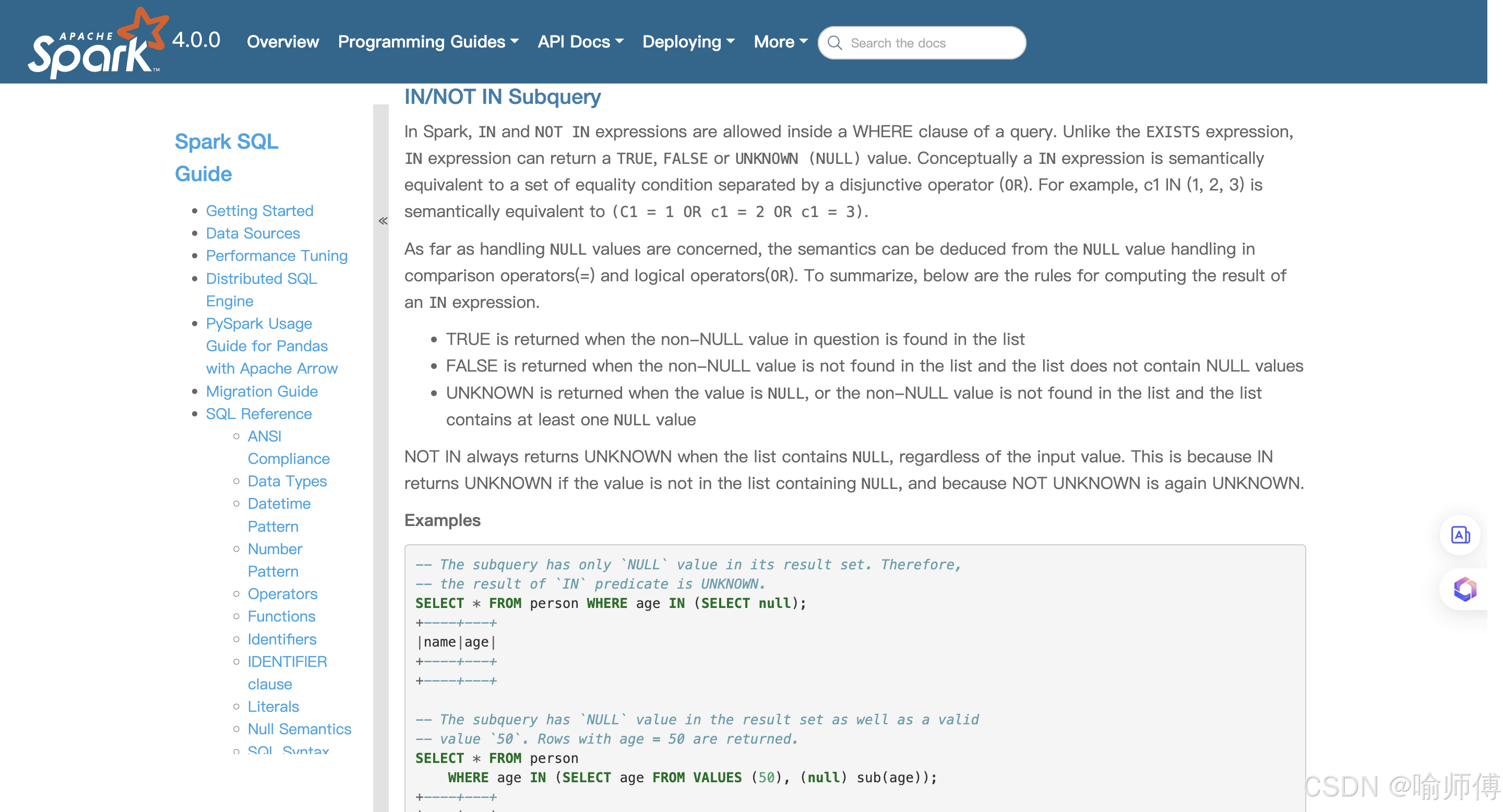
Unlike the
EXISTSexpression,INexpression can return aTRUE,FALSEorUNKNOWN (NULL)value.
與EXISTS不同,IN表達式可能返回三種布爾狀態:
TRUE:當前值在集合中;FALSE:當前值不在集合中;UNKNOWN(即NULL):當表達式中涉及了NULL值時,無法確定真假。
Conceptually a
INexpression is semantically equivalent to a set of equality condition separated by a disjunctive operator (OR).For example,c1 IN (1, 2, 3)is semantically equivalent to(c1 = 1 OR c1 = 2 OR c1 = 3).
從語義上講,IN 表達式等價于多個等于條件用 OR 連接起來。
c1 IN (1, 2, 3)
相當于:
c1 = 1 OR c1 = 2 OR c1 = 3
As far as handling
NULLvalues are concerned, the semantics can be deduced from theNULLvalue handling in comparison operators(=) and logical operators(OR).
對于 NULL 值的處理方式,可以基于比較運算符(如 =)和邏輯運算符(如 OR)的行為來推導。 也就是說,IN 的行為是建立在底層 SQL 對 NULL 處理規則之上的。
To summarize, below are the rules for computing the result of an
INexpression.
TRUEis returned when the non-NULL value in question is found in the listFALSEis returned when the non-NULL value is not found in the list and the list does not containNULLvaluesUNKNOWNis returned when the value isNULL, or the non-NULL value is not found in the list and the list contains at least oneNULLvalue
IN 表達式的計算規則如下:
| 情況 | 結果 |
|---|---|
| 當前值不為 NULL,并且存在于列表中 | TRUE |
| 當前值不為 NULL,但不在列表中,且列表中沒有 NULL值 | FALSE |
| 當前值為 NULL,或者列表中有 NULL值但當前值不在其中 | UNKNOWN |
只要列表中包含 NULL,即使當前值不在列表中,也不能簡單地返回 FALSE,而是返回 UNKNOWN。
IN Demo:
1:子查詢結果只有 NULL
%sql
WITH person AS (SELECT * FROM VALUES('a', 25),('b', 30),('c', 35),('d', 40),('e', 50),('d', 50)AS person(name, age)
)
SELECT * FROM person
WHERE age IN (SELECT null);空表?
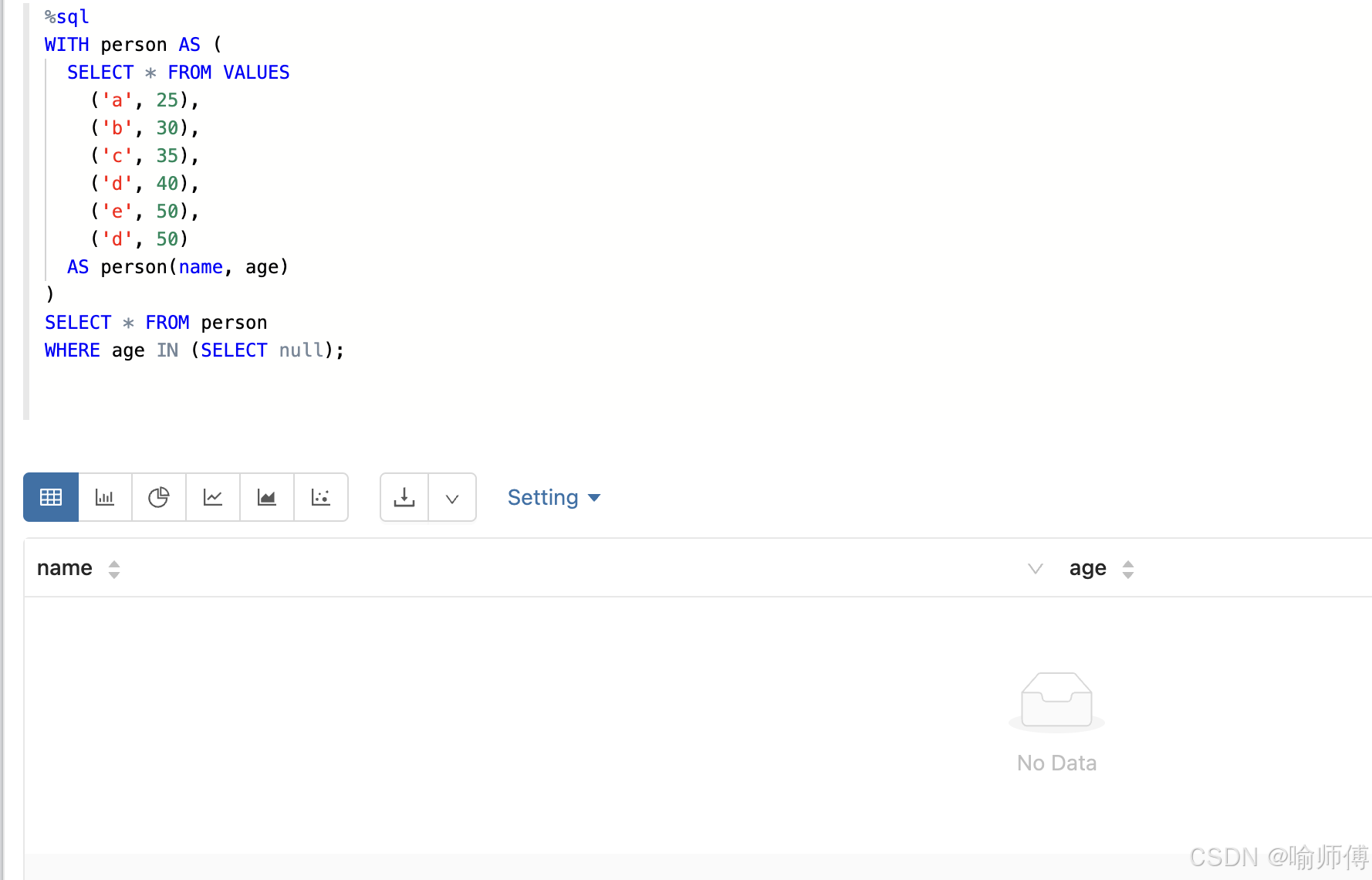
IN (NULL)返回的是UNKNOWN,不會匹配任何行。
2:子查詢包含 NULL 和有效值
%sql
WITH person AS (SELECT * FROM VALUES('a', 25),('b', 30),('c', 35),('d', 40),('e', 50),('f', 50)AS person(name, age)
)
SELECT * FROM person
WHERE age IN (SELECT age FROM VALUES(50), (NULL)AS sub(age)
);
-- 雖然子查詢里有 NULL,但只要匹配到具體值就會返回;
只有 age = 50 的記錄被選中。
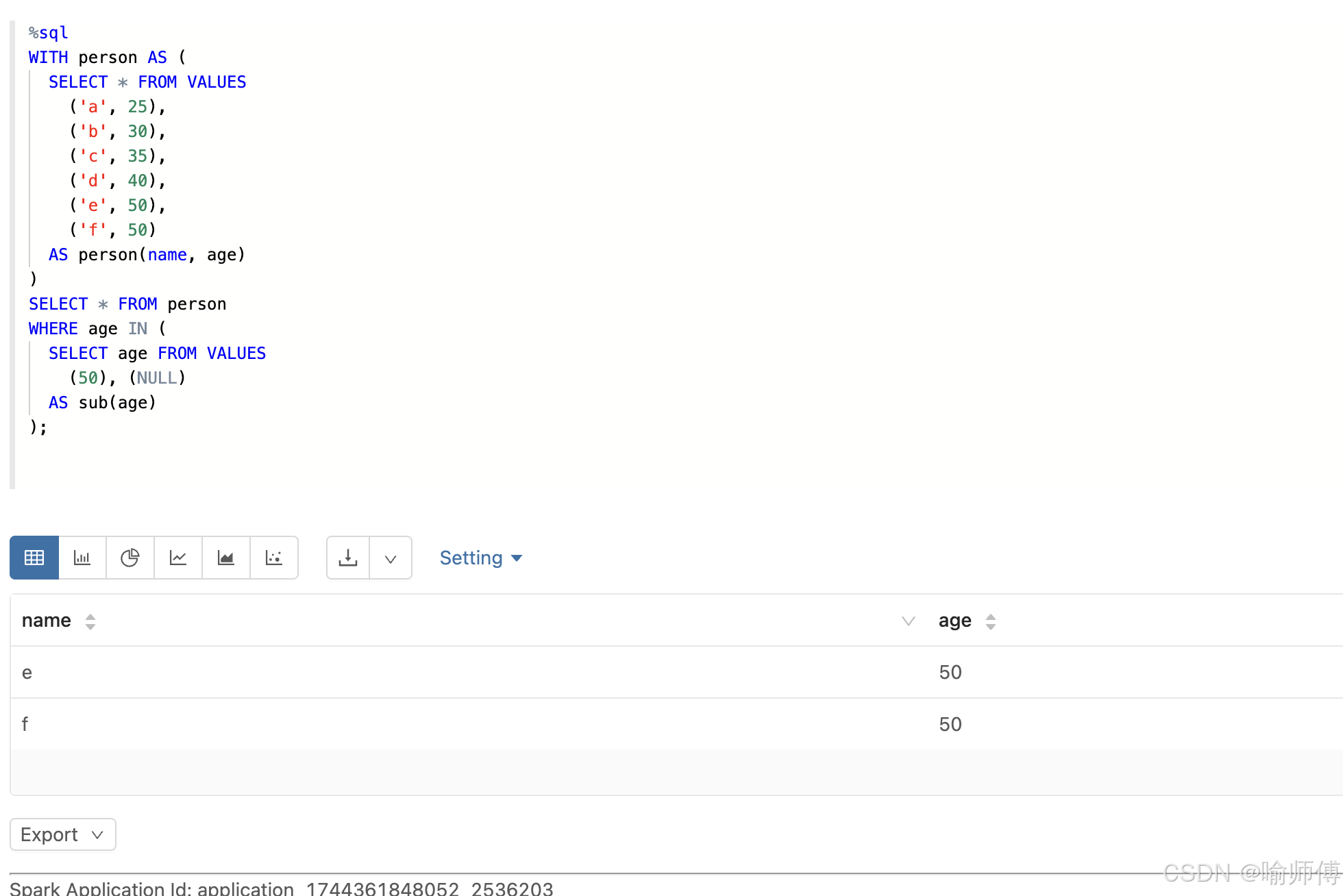
3:子查詢包含 NULL 和多個值
%sql
WITH person AS (SELECT * FROM VALUES('a', 25),('b', 30),('c', 35),('d', 40),('e', 50),('f', 50)AS person(name, age)
)
SELECT * FROM person
WHERE age IN (SELECT age FROM VALUES(25), (30), (NULL)AS sub(age)
);
-- 雖然子查詢里有 NULL,但只要匹配到具體值就會返回;
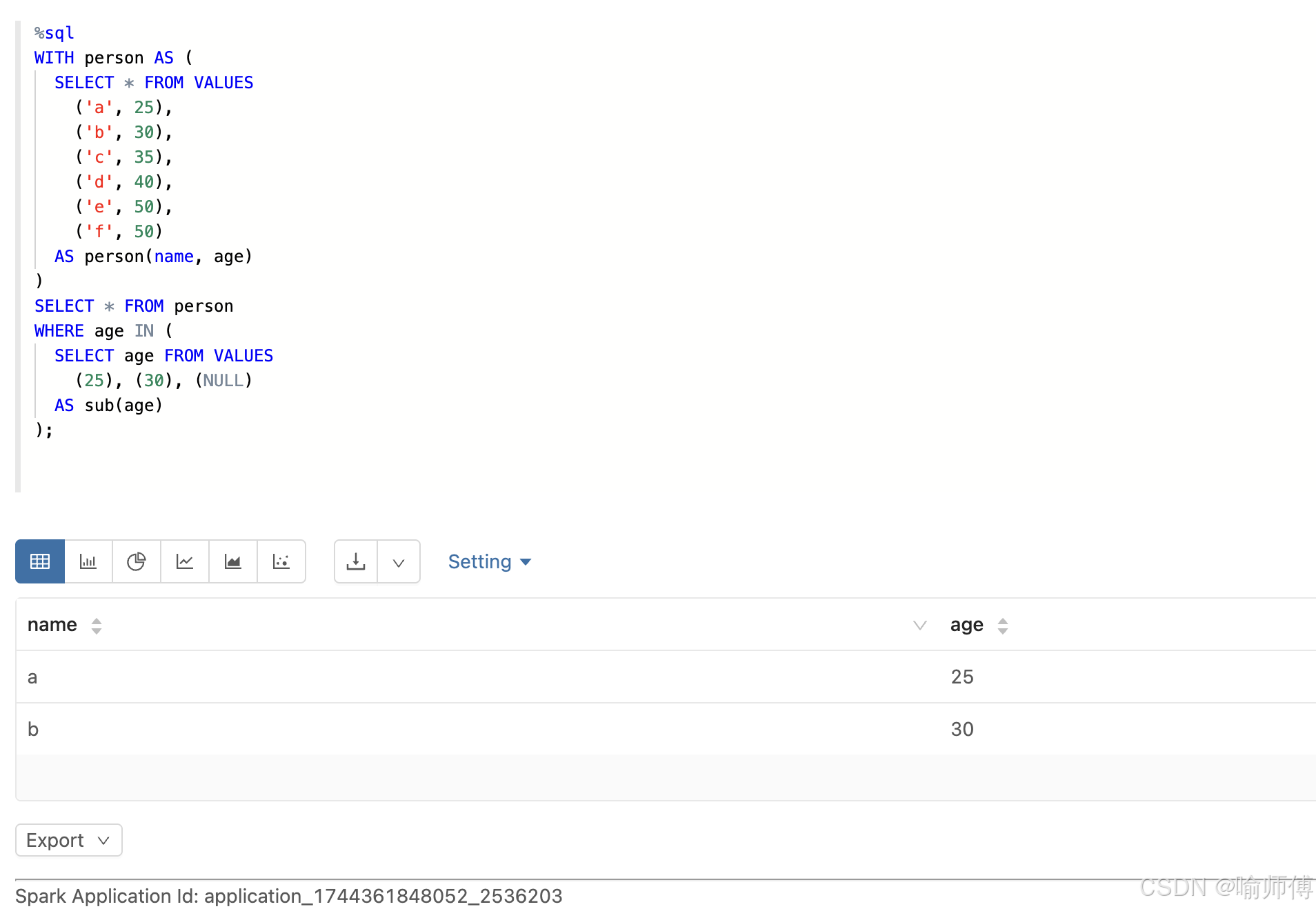
4: 主表中存在 NULL 值,同時子查詢結果也包含 NULL
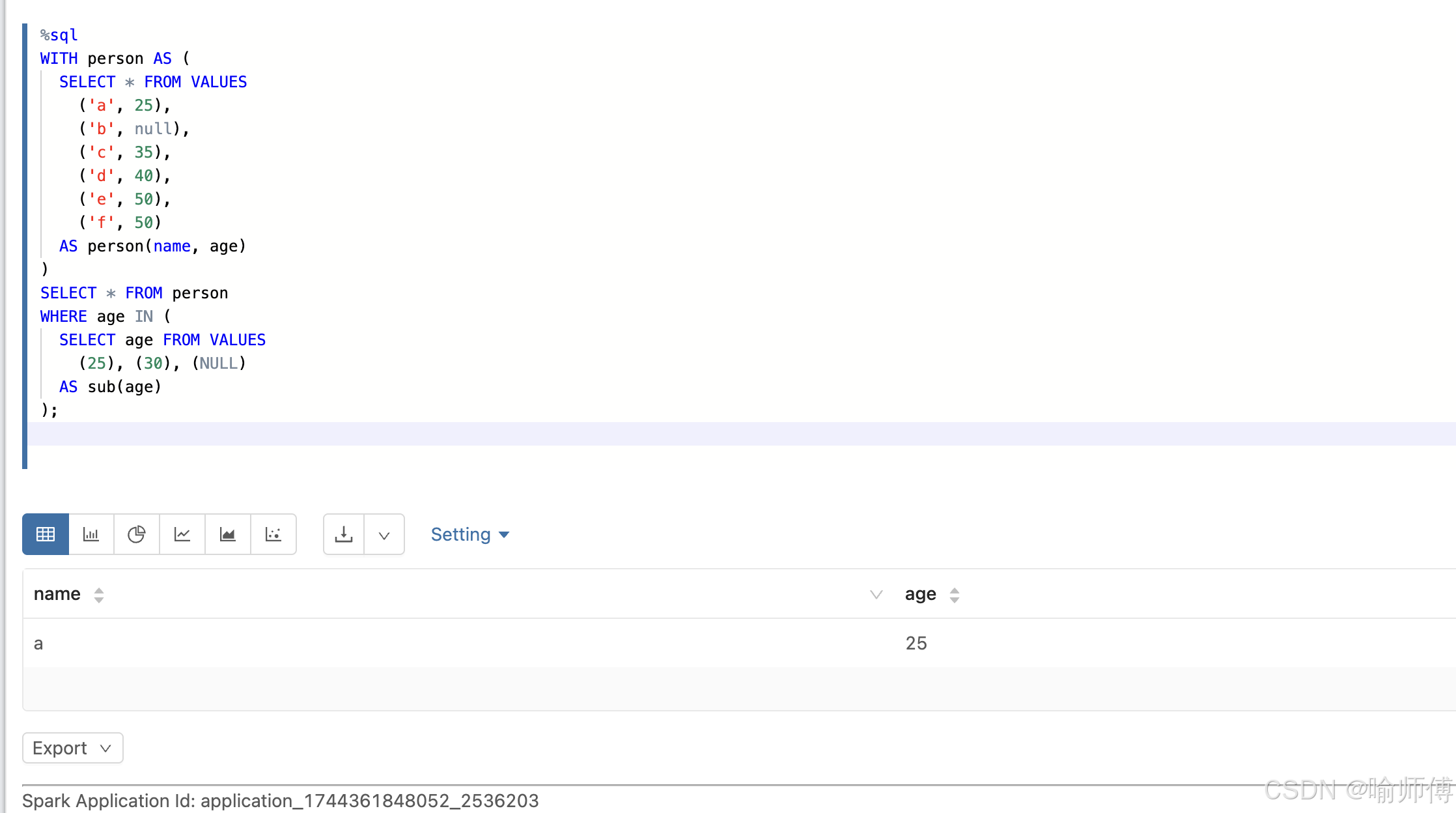
| 條件 | 是否被選中 | 原因 |
|---|---|---|
| age = 25 | ? 是 | 匹配列表中的值 |
| age = NULL | ? 否 | NULL IN (…) → UNKNOWN |
| age = 35/40/50 | ? 否 | 不匹配列表中的非 NULL 值,且列表中有 NULL → UNKNOWN |
NOT IN Demo:
只要 NOT IN 后面的子查詢包含 NULL,整個條件就會變成 UNKNOWN, 沒有任何行被返回。
避免這個問題,需要在子查詢中加上 WHERE age IS NOT NULL。
1:子查詢結果只有 NULL
NOT IN(只要有null)不返回任何結果
%sql
WITH person AS (SELECT * FROM VALUES('a', 25),('b', 30),('c', 35),('d', 40),('e', 50),('d', 50)AS person(name, age)
)
SELECT * FROM person
WHERE age NOT IN (SELECT null);
子查詢中包含 NULL,NOT IN 整體返回 UNKNOWN,SQL 不會將其視為 TRUE,所以沒有行滿足條件。
2: 子查詢包含 NULL 和有效值
NOT IN(只要有null)不返回任何結果
%sql
WITH person AS (SELECT * FROM VALUES('a', 25),('b', 30),('c', 35),('d', 40),('e', 50),('f', 50)AS person(name, age)
)
SELECT * FROM person
WHERE age NOT IN (SELECT age FROM VALUES(50), (NULL)AS sub(age)
);
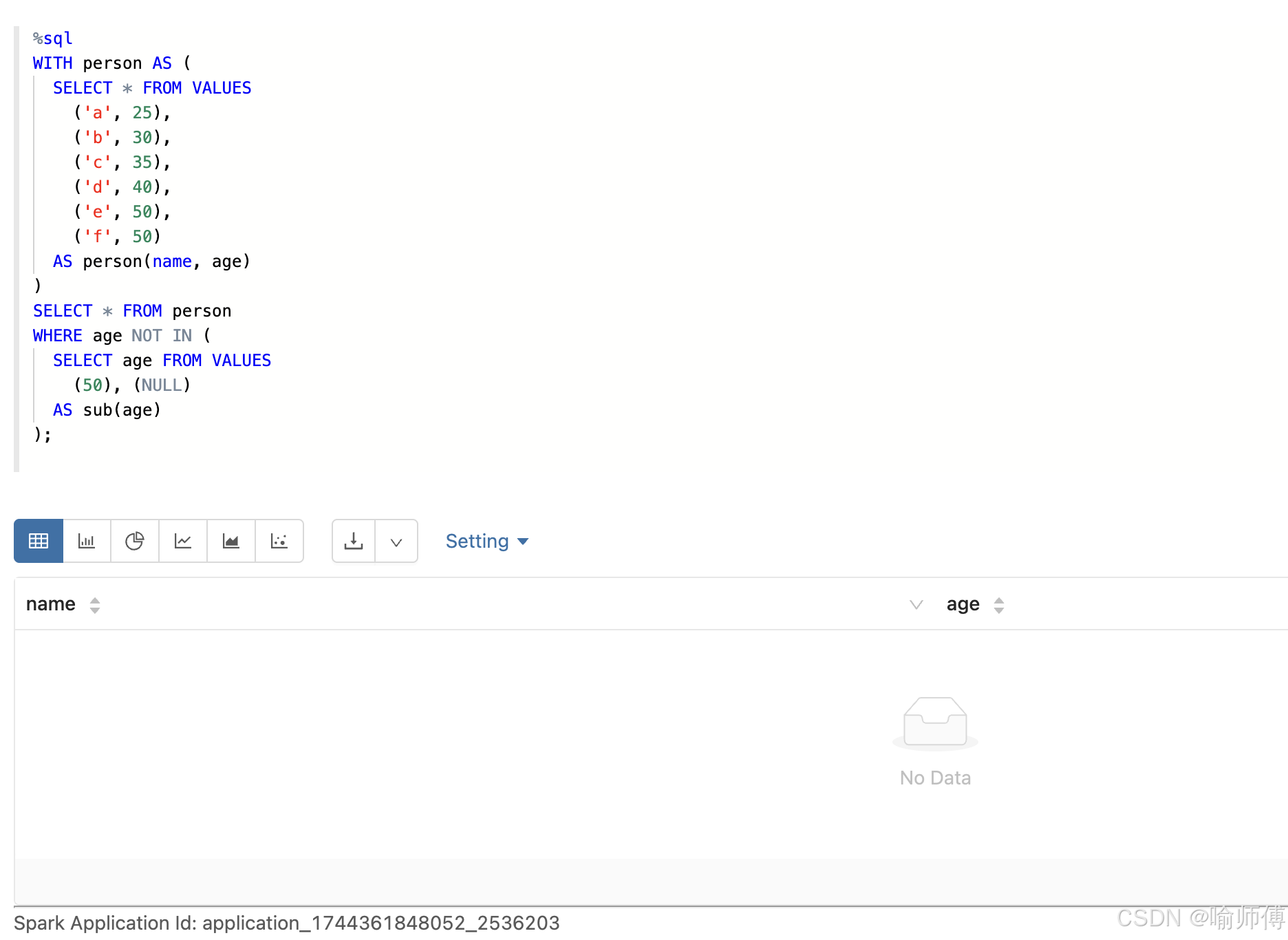
3: 主表中存在 NULL 值,同時子查詢結果也包含 NULL
NOT IN(只要有null)不返回任何結果
%sql
WITH person AS (SELECT * FROM VALUES('a', 25),('b', 30),('c', null),('d', 40),('e', 50),('f', 50)AS person(name, age)
)
SELECT * FROM person
WHERE age NOT IN (SELECT age FROM VALUES(50), (NULL)AS sub(age)
);
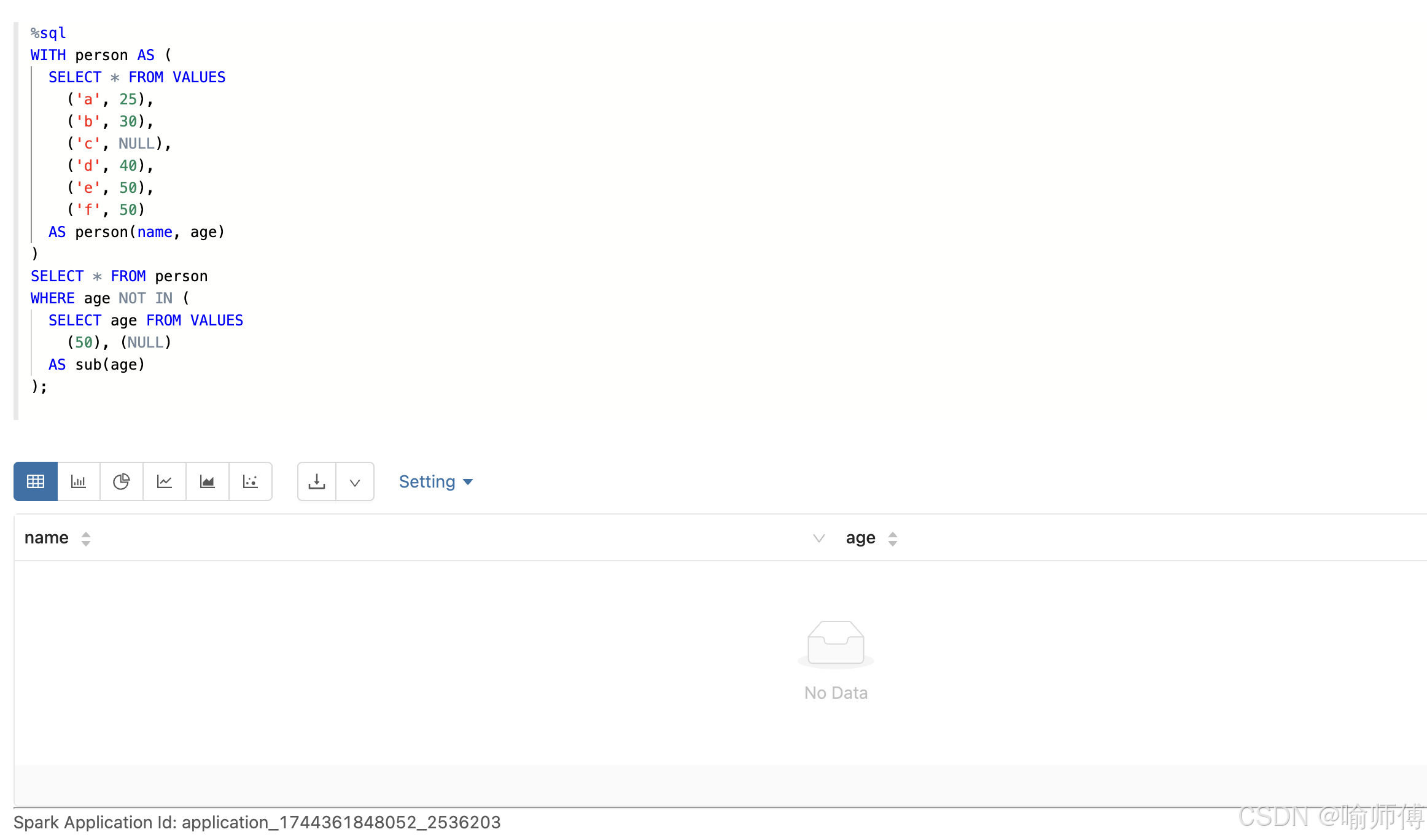
Spark官方對于各種函數處理null值的說明:
https://spark.apache.org/docs/4.0.0/sql-ref-null-semantics.html
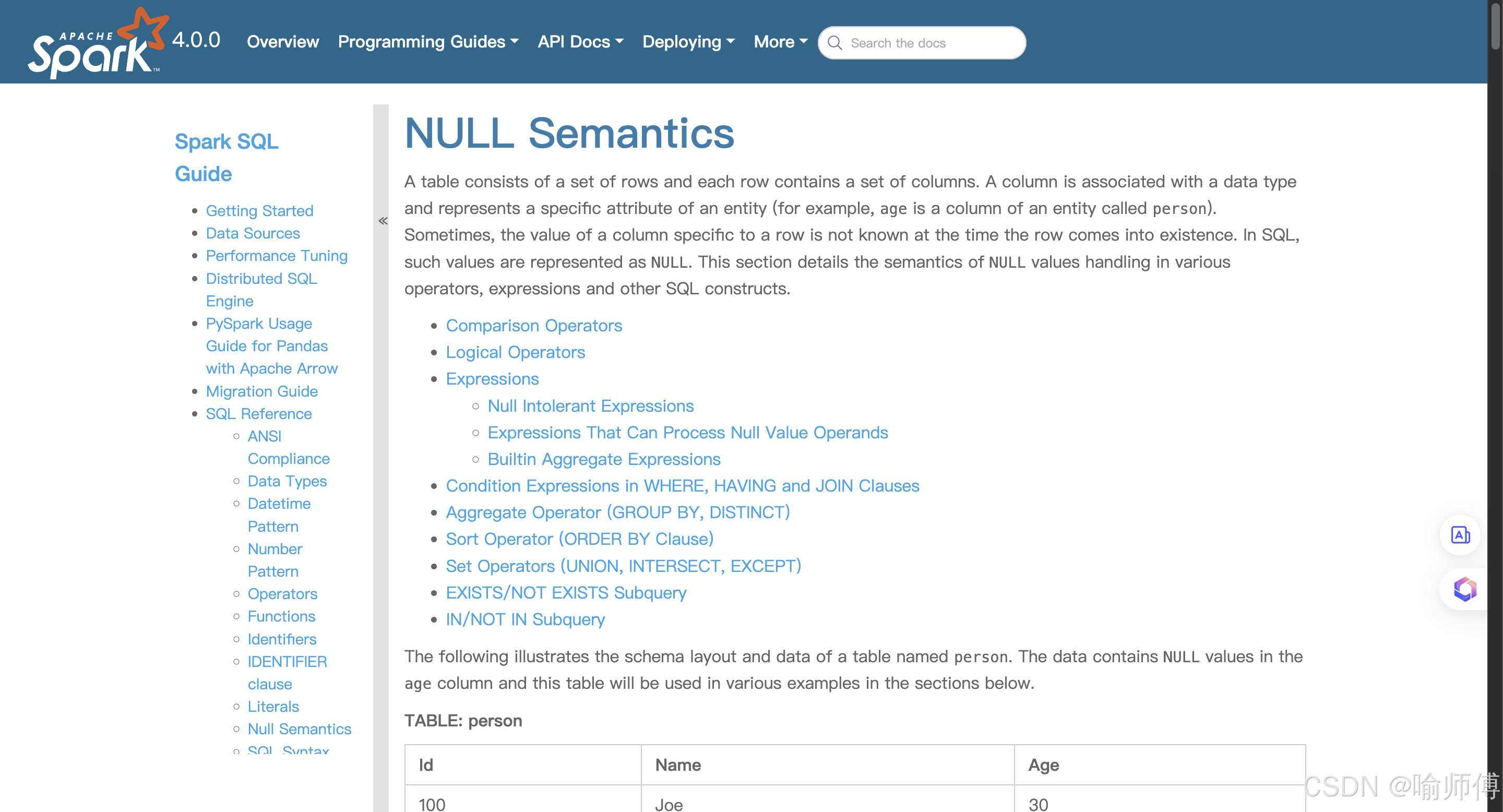












)



)


